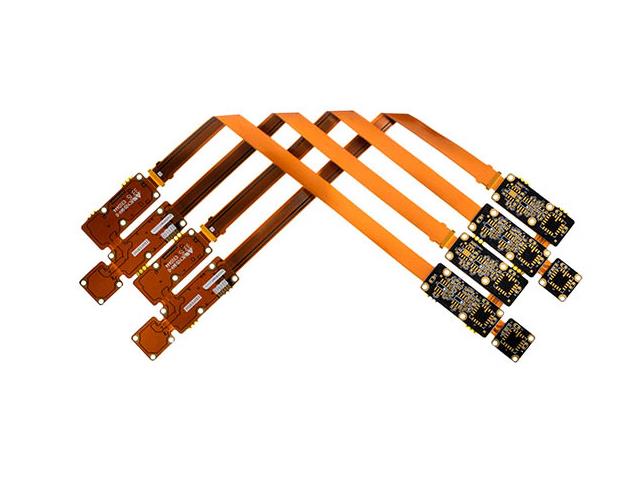The birth and development of FPC and PCB gave birth to the new product of RIGID-FLEX PCB. Therefore, the soft and hard combination board is a circuit board with FPC characteristics and PCB characteristics formed by combining the flexible circuit board and the hard circuit board according to relevant process requirements after pressing and other processes.
Because the FPC and PCB are seamlessly pressed through the press according to the planning requirements of the electronic engineers, After a series of details, the RIGID-FLEX PCB is relatively expensive, which may be nearly twice as much as that of the original "soft board+hard board". However, if the price of the connector or HotBar is deducted, the price may tend to be consistent, and the detailed cost may have to be calculated again to have a clearer outline. Another disadvantage is that it may be necessary to use a carrier to support the part of the soft board during the stamping and furnace passing, which virtually increases the assembly cost of SMT.

But it has many advantages as follows:
1. It can effectively save space on the circuit board and save the use of connectors or the manufacturing process of HotBar
Because the RIGID-FLEX PCB has been combined, the space needed to use connectors or the HotBar process can be saved. For some circuit boards with high-density requirements, it is like a treasure to lose a connector space.
In this way, the cost of using connector parts or the cost of the HotBar manufacturing process can be saved. In addition, the space between the two boards will become more compact because of the omission of connectors.
2. Shortening the distance and increasing the speed of signal transmission can effectively improve the reliability
The traditional signal transmission through the connector is "circuit board → connector → soft board → connector → circuit board", while the signal transmission of the soft and hard composite board is reduced to "circuit board → soft board → circuit board".
The signal transmission distance is shorter, and the problem of signal transmission attenuation between different media is reduced. Generally, the circuit on the circuit board is made of copper, while the contact terminal of the connector is gold-plated, and the soldering pin is fully tinned, In addition, solder paste needs to be used to solder on the circuit board, so the signal transmission between different mediums will inevitably have some attenuation. If soft and hard bonding boards are used, these mediums will become less, and the signal transmission ability can also be relatively improved, which will help improve the reliability of some products with high demand for signal accuracy.
3. Simplify product assembly and save assembly time
The use of RIGID-FLEX PCB can reduce the working hours of SMT printing because the number of connectors is reduced. It also reduces the man hour for assembly of the whole machine, because the assembly action of inserting the soft board into the connector is omitted, or the manufacturing process of HotBar is omitted. It also reduces the cost of parts management and inventory. Because the BOM is reduced, the management is reduced.
In consumer products, RIGID-FLEX PCB not only maximizes space use and minimizes weight but also greatly improves reliability, thus eliminating many demands for welding joints and fragile wiring prone to connection problems. These are just some examples, but RIGID-FLEX PCB can benefit almost all advanced electrical applications, including test equipment, tools and cars.